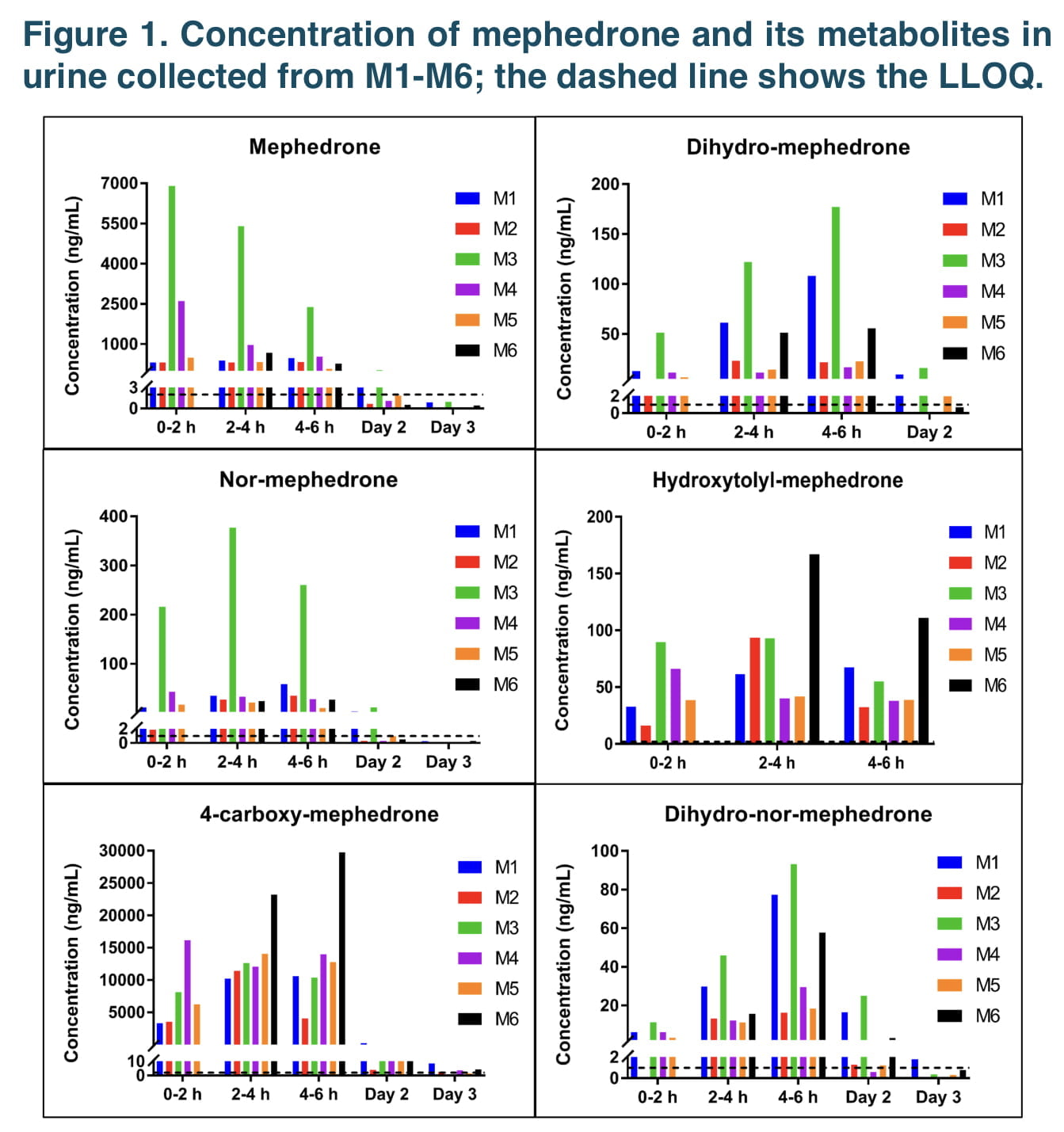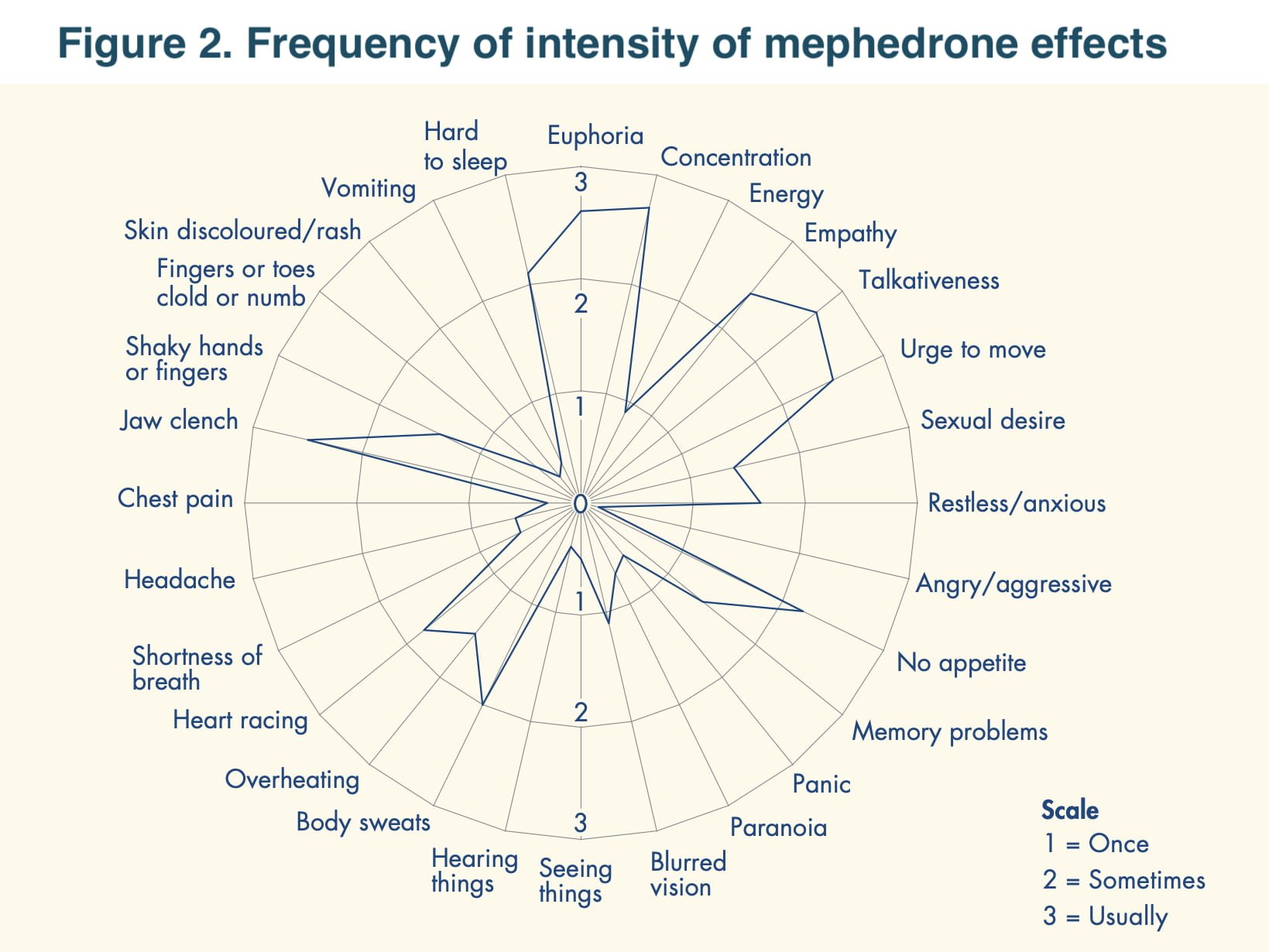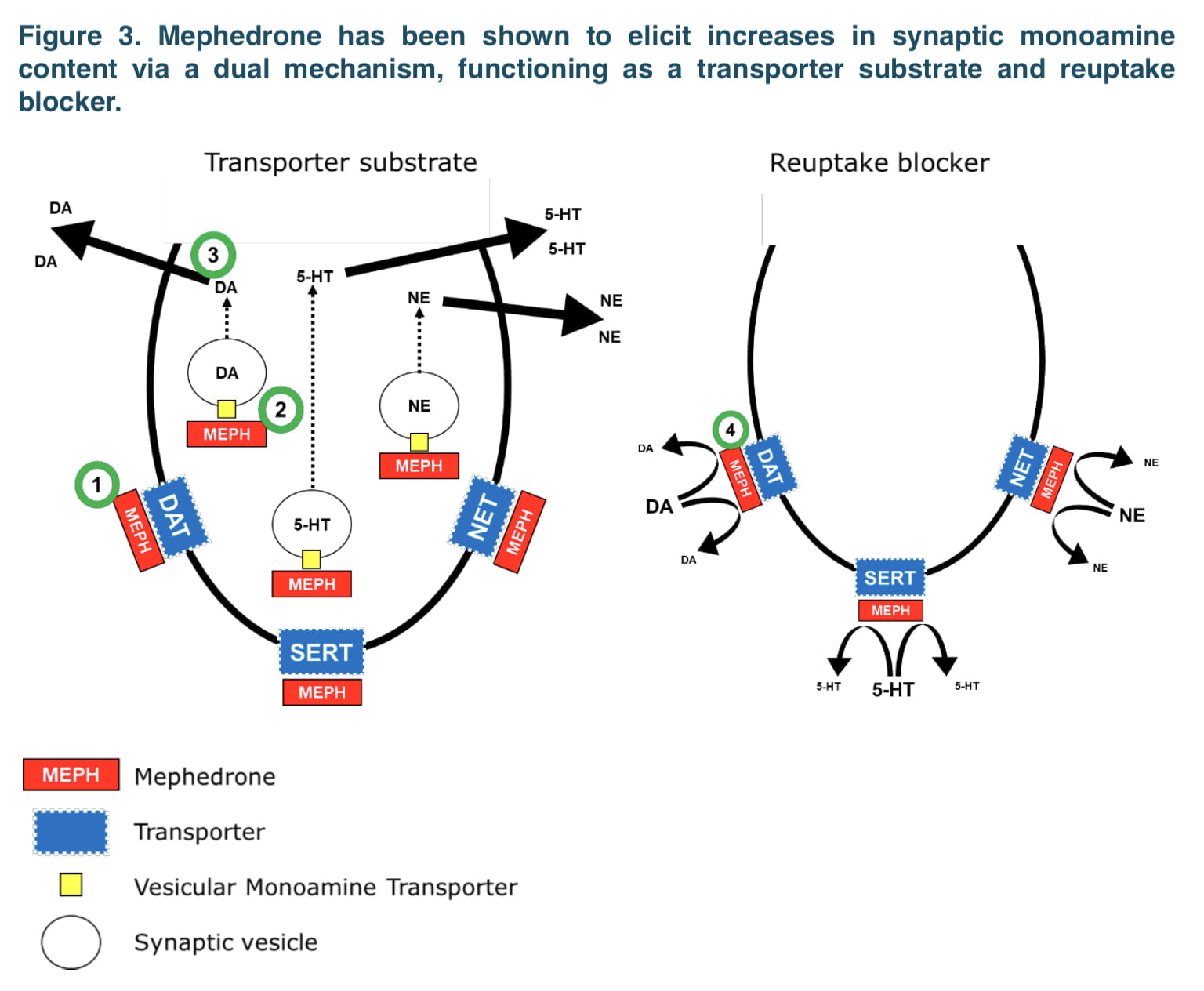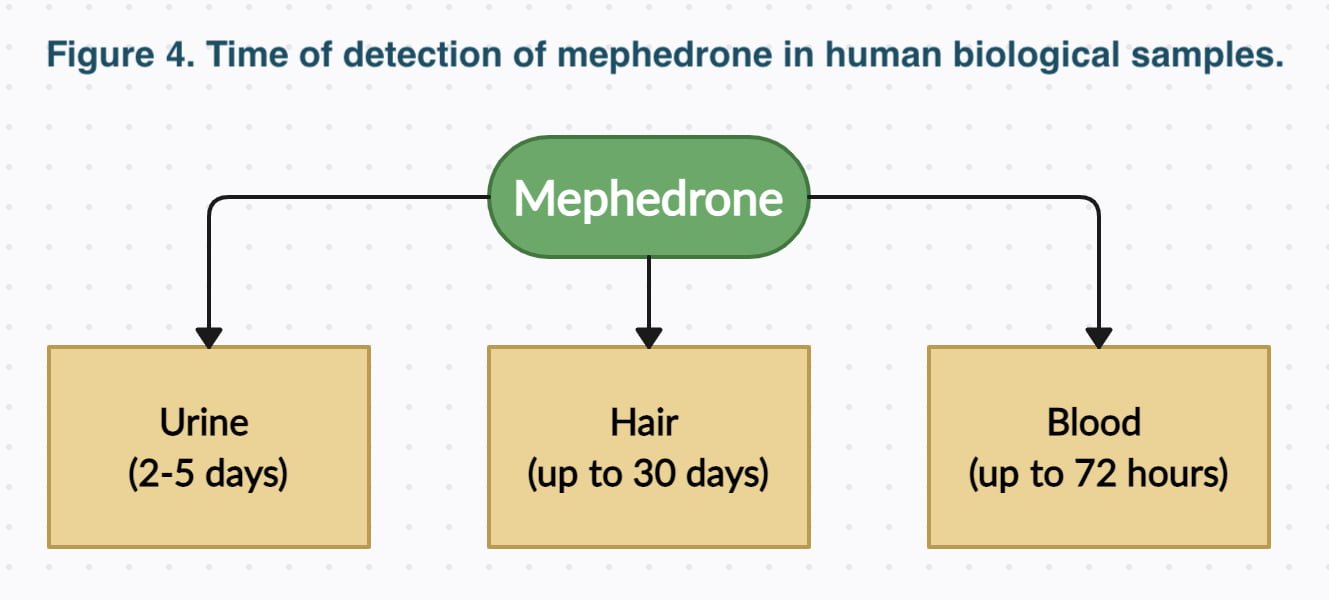Mephedrone in the body: how long is it? What’s the danger? Why is it important to know the algorithm of rapid elimination of mephedrone and its metabolites from the body? What medications will help remove mephedrone from the body and restore your condition. In this publication you will learn the answers to all the questions you are interested in.
The chemical structure of cathinones was described as far back as 1929, but the first reports of its recreational use as a new member of the family of psychoactive substances, appeared only in 2007. At the same time, mephedrone’s metabolites were studied even later. Mostly, mephedrone interacts with the transporters dopamine, norepinephrine, and serotonin (transporters DAT, NET, and SERT). The aforementioned transporters are membrane proteins involved in the starting and reuptake of the relevant neurotransmitters, which then return to the presynaptic after release, limiting neurotransmitter diffusion.
Mephedrone metabolism has been the subject of in vitro and in vivo research in both animal models and humans. N-demethylation of the secondary amine results in nor-mephedrone (NOR), reduction of the ketone moiety to the hydroxyl group results in dihydro-mephedrone (DHM), and oxidation of the tolyl moiety results in hydroxytolyl-mephedrone (HYDROXY) and 4-carboxy-mephedrone (4-CARBOXY). Dihydronormephedrone is created when the ketone moiety is simultaneously reduced, and the secondary amine is N-demethylated (DHNM).
Human mephedrone metabolism was discovered to be primarily mediated by the hepatic CYP2D6 enzyme, with minimal involvement from other CYP enzymes. Mephedrone’s stability has previously been studied in human whole blood that has been preserved with various agents and kept in various settings. When mephedrone is stored using acidic preservatives (NaF/KOx and NaF/citrate buffer), it has been shown to be best stable at -20°C. Although the exact reason for mephedrone’s instability in biological matrices is unknown, a prior investigation on the drug’s breakdown in alkaline solution points to the participation of oxidants such dissolved oxygen.
How Long Does MCAT Take To Kick In?
The duration of the effects of mephedrone largely depends on two main factors: the amount of 4MMC consumed and the method of use. If you use 150 mg of mephedrone orally, the effects will start smoothly within 15-30 minutes and last for four hours, followed by post effects. Most users who take mephedrone take multiple doses during a single use session, with an average of three hours between doses. Inhaling mephedrone makes the user feel the effects much earlier and with greater intensity. When 50 mg of 4MMC is inhaled, the effects occur within five minutes, peaking by 30–45 minutes, followed by a plateau and an abrupt withdrawal by 50–70 minutes.
The effects tend to last a short time, forcing users to take successive doses with very little time in between. A dose of mephedrone can also last longer when taken with other substances, such as alcohol. However, this causes the user to have a distorted idea of how much they are taking, greatly increasing the likelihood of overdosing. The duration of a mephedrone dose will decrease as the user’s tolerance increases, which usually causes them to respond by taking more of the drug.
How Long Is MKAT In Your System After Use?
The length of time mephedrone stays in the body can vary in different ranges and depends on many factors. For example, the more a person uses mephedrone, the longer it will stay in the body and cause major effects (desirable and side effects). However, large amounts of mephedrone in the body can lead to acute intoxication, which requires emergency medical attention. There are already studies available that can demonstrate how long does mephedrone stay in your system.
The immediate mephedrone can remain in the body (detected in serum, brain, lungs, and liver) for up to eight hours at about 100 mg, indicating the possibility of additive effects of subsequent doses. Also, the metabolite 4-OH-mephedrone, persists at high levels for 9-10 hours after the use of a standard dose of 100 mg and may even be detected in the blood (in small amounts) 3 days after use (it is proved that this metabolite poorly penetrates the blood-brain barrier and does not cause central effects).
However, the metabolite nor-mephedrone, which circulates in plasma for up to three days, can cause central effects by inhibiting dopamine and 5-HT reuptake. Interestingly, mephedrone can be detected by LC-MS/MS in fingerprints up to three days after ingestion. A recent study on the elimination of mephedrone by the Department of Forensic Sciences at King’s College London reported, how long does mephedrone stay in your urine. When 100 mg of mephedrone is taken intranasally, the Tmax is about 52 minutes in the blood, and the elimination T1/2 (half-life) averages 2 hours.
The maximum concentration (Cmax) is about 45 ng/mL, with the R-enantiomer of mephedrone having a higher mean maximum concentration and a longer mean half-life. Moreover, R-mephedrone has a lower mean clearance and 1.3 times the mean area under the curve than S-mephedrone. The average renal clearance of mephedrone is about 108 mL/min, with about 1.5, mephedrone excreted unchanged in the urine in the first 6 hours after use. The complete elimination of mephedrone and its metabolites from the body is about five days.
Effect on the brain
What does mephedrone do? Much of what is known about the adverse side effects of mephedrone is derived from anecdotal reports. Users warn of a feeling of intense paranoia and a prolonged withdrawal from the drug that lasts as long as nine hours. Some say withdrawal from mephedrone is worse than from cocaine. The drug’s effects on the brain are no less dangerous, although much remains unknown about how it affects the central nervous system (CNS) and the blood-brain barrier. Recent studies show that mephedrone damages the blood-brain barrier due to several factors: disruption of the blood-brain barrier, inflammation, and endothelial activation. In the history of mephedrone, there are many reports of psychotic, aggressive behavior due to mephedrone use.
Other negative mental and psychological side effects of mephedrone use include:
- Euphoria quickly turning into paranoia
- Uncontrollable cravings for mephedrone
- Depression
- Nightmares
- Extreme agitation
- Inability to sleep (insomnia)
- Hallucinations and delusions
- Episodes of self-harm
- Suicidal thoughts or suicide attempts
Mephedrone In The Body: How Long Is It?
The mechanism of action of mephedrone is due to blockade of reuptake of the monoamine neurotransmitters serotonin, dopamine and noradrenaline, and inhibition of monoamine oxidase and catechol-O-methyltransferase, which increases the content of the above neurotransmitters in the synaptic gap. Mephedrone is also a monoamine-releasing agent. The increased long-term concentration of monoamines in the synaptic cleft underlies the stimulant, euphoric, and hallucinatory effects of mephedrone, as well as acute and chronic dopaminergic and serotonergic disorders. Interestingly, mephedrone has a greater affinity for dopamine transport than serotonin.
Synthetic cathinones can selectively and sustainably reduce VMAT2 function within the serotonin system, promoting the formation of unchanged forms of serotonin, which in turn affect the formation of active oxygen compounds, leading to neuronal stimulation, selective serotonin neurotoxicity. Mephedrone elicits a dose-dependent elevation of extracellular dopamine and 5-HT content in nucleus accumbens (NAcc), ventral tegmental area (VTA), striatum, substantia nigra and frontal cortex.
Despite mephedrone’s greater action in vitro as a substrate and blocker at DAT relative to SERT, these in vivo data indicate preferential elevation in all areas of 5-HT relative to dopamine. The rapidity of these increases is largely contingent on mephedrone’s route of administration, with increases observed following intravenous and subcutaneous injection (within 15 to 20 minutes) than by intraperitoneal (within 30 minutes). Irrespective of administration route, dopamine and 5-HT levels generally peak around 40 min post-administration of mephedrone, before returning to basal levels within one hour. Also, studies have shown that mephedrone induces excessive secretion of VEGF-A and PDGF-BB in the hBMVEC.
Thus, mephedrone-induced damage to the blood-brain barrier includes the following changes: conversion of the tight contact protein complex, leakage or hyperpermeability of the barrier, vascular endothelial activation, and proliferative inflammation. Considering that lethal outcomes in acute mephedrone intoxication are often caused by vasogenic cerebral edema, we can conclude that the neuroinflammatory process is a consequence of dysfunction of cerebral endothelial cells. In addition, in the presence of concomitant diseases (e.g., HIV), the use of mephedrone may promote the migration of HIV-infected immune cells across the blood-brain barrier into the brain parenchyma.
Does Mephedrone Show Up On Drug Tests?
Most recreational users often wonder: can mephedrone be detected in a drug test? Mephedrone does be detected with a drug test, but it depends on which drug test method is used. There are special express test strips that allow you to test your urine for mephedrone. The most common form of drug test often used by employers to screen personnel and job candidates is the urine drug test kit.
This is usually a multi-parameter drug test that can detect up to 12 common groups of drugs in a single urine sample. Currently, most of these types of drug tests do not detect mephedrone. However, sometimes a urine drug test is performed and then the tests are sent to an outside lab for testing. In this situation, mephedrone use can be determined from a urine sample, as testing samples this way will be more accurate.
MCAT can be quantified, including in blood, plasma, or urine, by gas or liquid chromatography-mass spectrometry to confirm the diagnosis of poisoning in hospitalized patients or to provide evidence in a forensic investigation. When a standard recreational dose of MCAT is used, its concentration will be up to 100 µg/L, and in the case of acute mephedrone intoxication, the concentration can exceed 500 µg/L. MCAT can also be detected with a mouth swab.
These drug tests take a saliva sample, which is then sent to a lab for analysis. In addition to being a mephedrone drug test, this type of drug testing will detect the use of any drugs of abuse. Many mephedrone users may not know exactly what they are taking. Street drugs are not regulated, so the white powder could be a mixture with anything! What was sold to them as mephedrone may actually contain amphetamines or methamphetamines . These are drugs that can be detected with a urine drug test kit.
Help for Mephedrone Addiction
Treatment for mephedrone addiction is a very difficult and long-term process, but with the support of loved ones, it will allow the mephedrone addict to start a normal life again. It takes place in several stages, including:
- Detoxification. Withdrawal of the drug and products of its decay from the body with the help of infusion therapy.
- Withdrawal of the withdrawal syndrome with the help of medications and drips.
- Elimination of consequences of MCAT using therapy for heart and gastrointestinal diseases and treatment of infectious diseases, if any.
- The rehabilitation part which includes sessions with psychologists and psychiatrists, group therapy, interest seeking, and maintenance with the help of medications.
- Socialization. The most important stage, during which the patient tries to form new habits, live without addictions, look for new friends and work.
Summary
Withdrawal of mephedrone from the body for most users will take from 2 days to 10 days. This is influenced by many different factors, from the size of the dose of the substance to the state of health. Chronic mephedrone addicts may show positive results even several weeks after their last use (in the case of hair analysis). Mephedrone detox is only a way to remove drug residue from the body. It does not help to fight the real cause of the problem – the very fact of MCAT use. Regular drug use has a devastating effect on both health and social life. Stopping the use of psychoactive substances is the only way to full recovery.
FAQ
How long does mephedrone stay in the blood?
Detection of traces of the drug in the blood is possible within 72 hours after a small single dose is taken. On average, the elimination time of mephedrone from the blood is 12-48 hours.
How long does mephedrone last in my urine?
MCAT is eliminated from the body mainly through the excretory system. The kidneys filter out the excess content of blood. The largest amount of the drug can be found in the urine. Determining the content of mephedrone in it is the main diagnostic way to clarify the use of the drug. Full laboratory tests can show trace amounts of the drug within 48 hours if a single moderate dose is used. Those with mephedrone addiction may test positive even within five days of the last act of MCAT use.
What does mephedrone’s elimination rate depend on?
The metabolism of drugs in the body is affected by many factors that depend on a person’s constitution, habits, and social conditions. Mephedrone’s excretion rate is influenced by: the dose of the drug used, the condition of internal organs, body weight, congenital characteristics of the body, and lifestyle.





